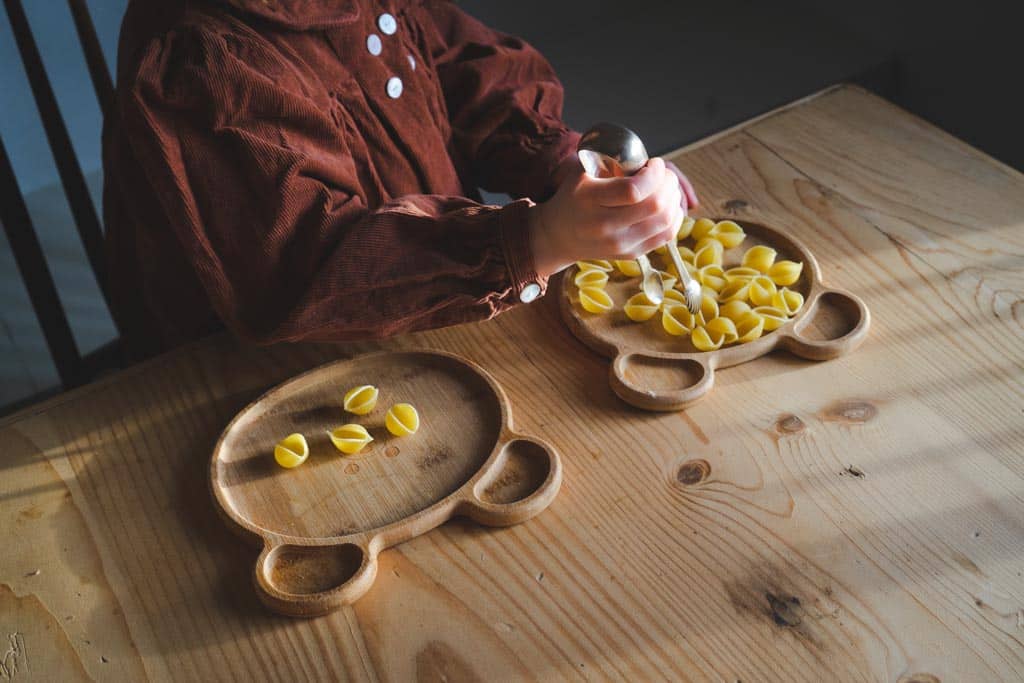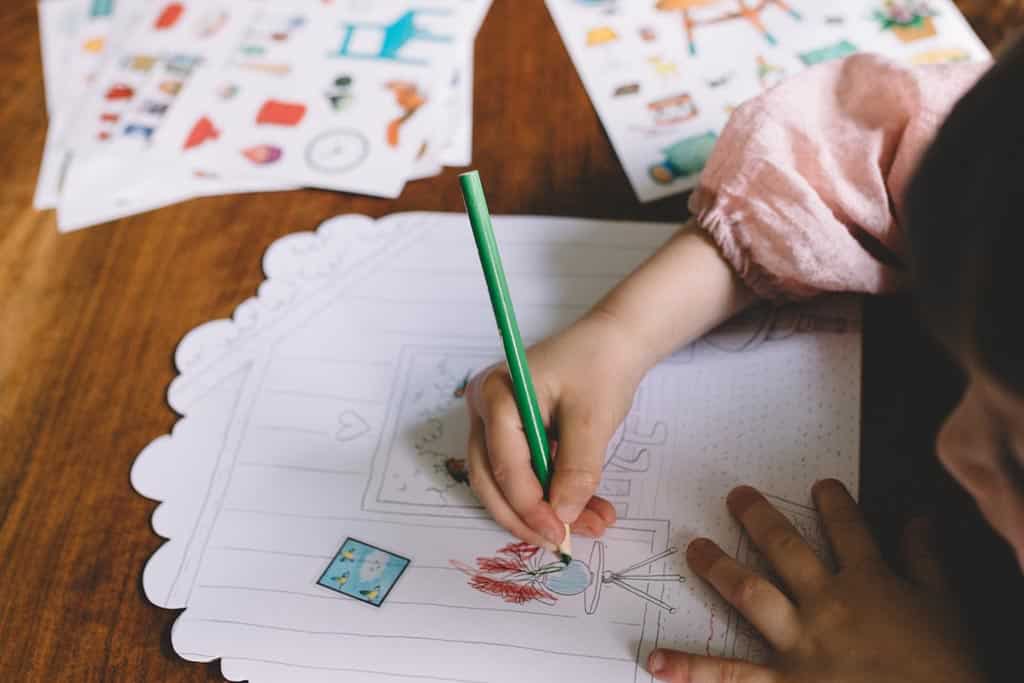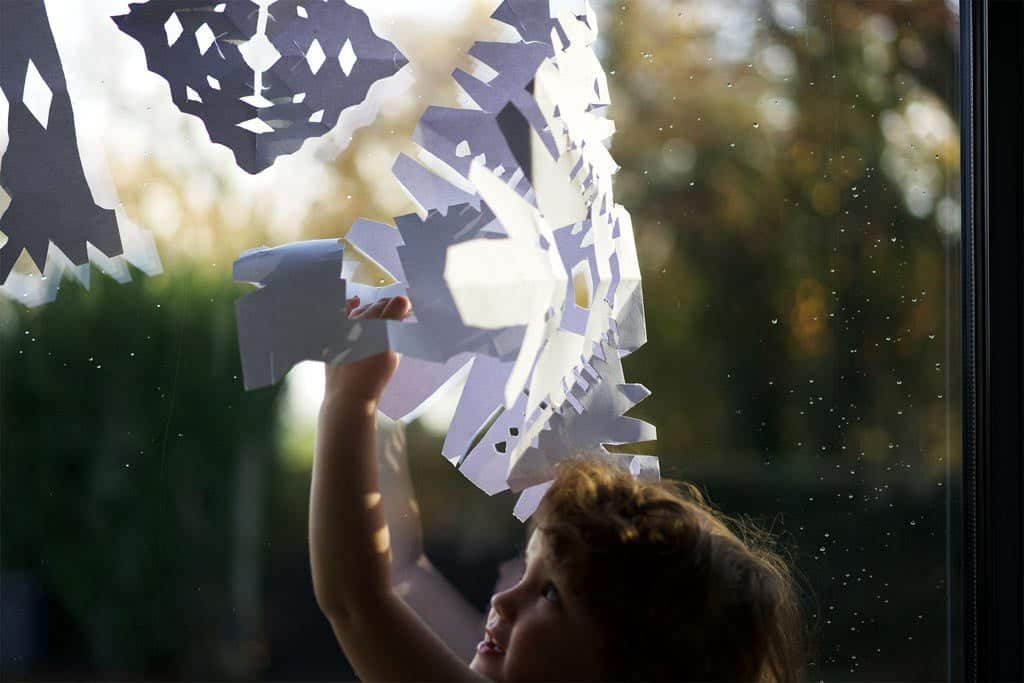The development of fine motor skills becomes increasingly important as your child begins their journey into the world of print. These skills involve coordinating small muscle movements, usually synchronising the hands and fingers with the eyes. They are essential for everyday tasks such as buttoning clothes, tying shoelaces, and writing.
In handwriting, fine motor skills help children to easily grip and control a pen or pencil, apply appropriate pressure to the paper, and control the spacing and alignment of letters. Without strong fine motor skills, a child may struggle with these tasks, leading to slower development of writing skills and potentially affecting their academic progress and self-esteem.
In-hand manipulation skills are a subset of fine motor skills. They refer to the ability to move and adjust an object in the hand without using the other hand or surfaces for support. These skills are essential for handwriting as they allow children to adjust the pencil in their fingers for precision in letter formation and control of line quality.
Activities to Enhance Finger Strength and Dexterity
Handwriting requires strength, control, and flexibility of the fingers. Here are some fun activities to help develop these essential skills:
- Finger painting and tracing shapes. Finger painting is an excellent way for children to strengthen their fingers while having fun. Have your child draw shapes, letters, or objects using their finger as a ‘brush’. This helps to develop finger strength, control, and familiarity with different shapes, which is useful for writing letters and numbers. Try this easy finger paint recipe.
- Pinch and shape playdough. Manipulating playdough can be a fantastic workout for little fingers. Let your child knead, roll, squeeze, and pinch the dough. You can also encourage them to make shapes, letters, or numbers out of the dough, further developing their finger strength and control. Try our simple playdough recipe.
- Threading beads or pasta. Threading small objects on a string is a fantastic activity for developing dexterity. It requires concentration and control, helping to develop hand-eye coordination and a precise grip. Read more about threading activities.

Developing Pincer Grip and Precision Movements
The pincer grip (holding an object between the thumb and index finger) is essential for holding a pencil correctly. Here are some engaging activities to develop this skill:

- Pick up with tongs and tweezers. Using tongs or tweezers to pick up small objects, like pom-poms or marbles, and transferring them to a bowl can be a great way to strengthen your child’s pincer grip. Make it a fun game by timing them or challenging them to pick up a specific number of objects.
- Sorting and transferring objects with clothes pegs. Picking up large things with tongs. Picking up something small with clothes pegs is a whole new level of challenge! More control, stronger grip. It’s tricky! See also washing line activities, which are also a great way to introduce sequencing of numbers and letters.
- Picking Up and Sorting Pom-Poms with Thumb and Index Finger. Using the thumb and index finger to pick up and sort soft pom-poms is another fun activity for your child. It helps to hone their fine motor skills and prepares them for the precise movements required in handwriting.
Remember, all of these activities should be fun for your child. The aim is to develop their skills through play and exploration, paving the way for successful handwriting development in a fun, stress-free way.
How to hold a pencil
Learn how to improve your child’s pencil grip with this helpful guide.
Improving Hand-Eye Coordination for Controlled Movements
Hand-eye coordination is essential for handwriting, allowing children to make controlled movements with their writing tools. These activities can help develop this skill:
Tracing Lines and Shapes with Finger or Small Manipulatives
Tracing is an effective way to develop hand-eye coordination. Encourage your child to trace lines and shapes with their finger or a small object such as a pebble or bead. This activity will also familiarise them with the movements needed to write certain shapes or letters.
Maze Activities and Dot-to-Dot Drawing
Mazes and dot-to-dot drawings are excellent activities for developing hand-eye coordination. They require children to control their movements to stay within the lines or connect the dots in the correct sequence.
Threading a Shoelace through Cardboard Shapes
This activity develops hand-eye coordination and improves fine motor skills and dexterity. Make some cardboard shapes with holes around the edges and encourage your child to thread a shoelace through the holes.
Enhancing Wrist and Forearm Stability
Wrist and forearm stability is essential for controlling a pencil during writing. Try these activities to help strengthen these areas:
Playful Activities with Scarves or Ribbons to Encourage Wrist Movements
Movements with scarves or ribbons are fun and can promote wrist flexibility. Encourage your child to make large, sweeping movements, figure eights, or circles.
Drawing and Colouring with Chunky Crayons or Markers
Chunky crayons or markers are excellent tools for young children. They are easier to hold and control, promoting confidence and enjoyment in drawing and colouring activities. These activities can also help to strengthen their wrist and forearm.
Using a Clothespin to Draw or Colour
Clip a marker or crayon into a clothespin and encourage your child to draw or colour with it. This unusual tool makes the activity more exciting and requires them to stabilise their wrist and forearm to control the clothespin.
Fun Writing Prep Exercises and Tracing Activities
Preparing your child for writing can be fun and engaging with these tracing and pre-writing activities:
Tracing Letters or Shapes with Finger or Marker
Give your child dotted or dashed lines of letters or shapes to trace with their finger or a marker. This will help them become familiar with the formation of each letter or shape.
Tracing Letters or Shapes in Sand or Shaving Cream
Make writing prep a sensory activity by having your child trace letters or shapes in sand or shaving cream. This activity adds a tactile element to learning, making it more engaging and memorable.
Connect-the-Dots and Mazes with a Finger or Marker
Connect-the-dots and maze activities can help your child practice controlled movements while learning about sequencing and problem-solving. Depending on your child’s comfort level and ability, these activities can be done with a finger or a marker.
Incorporating these activities into your child’s playtime can help them build the essential fine motor skills and hand-eye coordination needed for handwriting. Remember to keep activities fun and low-pressure, providing plenty of praise and encouragement.
Final word
Developing fine motor skills in your child’s early years lays the foundation for handwriting development. By introducing playful and engaging activities that improve finger strength, agility, hand-eye coordination, wrist and forearm stability, and in-hand manipulation skills, you’re setting your child up for success.
Remember, it’s not about rushing the process, it’s about giving your child plenty of opportunities to explore, learn and grow at their own pace. Every step they take towards mastering these skills is a triumph and a testament to their burgeoning abilities. Happy playing and practising!
Read more: Pencil grip | Hand-eye coordination | Learn to focus





